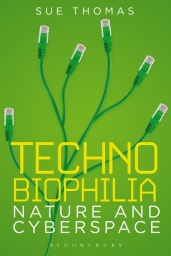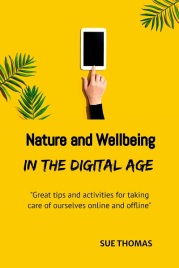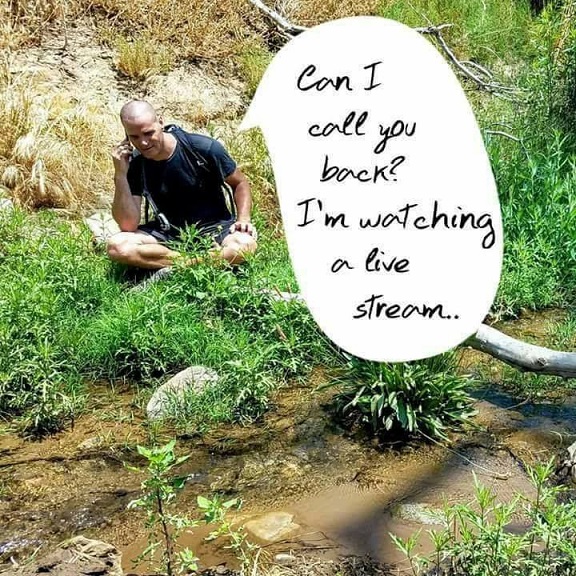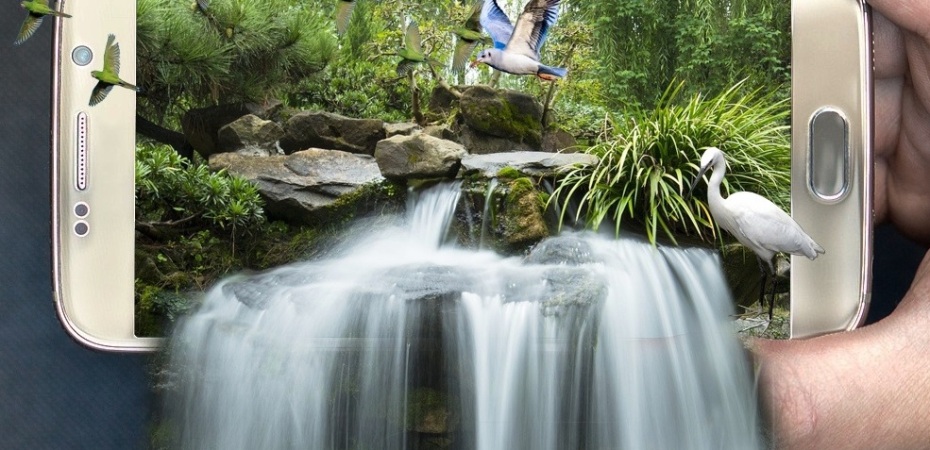It begins with biophilia
People seem to feel very drawn to nature. Even if we don’t get outdoors very often, there are times in our lives when the desire for contact with the natural world can become intense. This love of nature is so deeply ingrained in us that we can barely express it in words. The biologist E.O. Wilson calls it ‘biophilia‘. He believes that early humans survived by attuning themselves to their surroundings and ‘reading’ the behaviours of other creatures and landscapes around them. At that time it was a matter of safety, food and survival, but Wilson says that even today we remain deeply drawn to manifestations of life. It is this longing, often buried inside our genetic history, that calls us to the beach, the forest, the mountains, or maybe just to the nearest garden.
E.O. Wilson defined biophilia as “the innate attraction to life and lifelike processes”.
Technobiophilia (2013)
 My book Technobiophilia: nature and cyberspace began as an investigation into why there are so many nature metaphors in internet culture. But it ended with some conclusions which were surprising even to me.
My book Technobiophilia: nature and cyberspace began as an investigation into why there are so many nature metaphors in internet culture. But it ended with some conclusions which were surprising even to me.
My eight years of research culminated in the unexpected discovery that the driving force behind this unlikely synergy seems to lie in biophilia. I created the term ‘technobiophilia’ to describe those same impulses when they’re interpreted by or through computers and the internet.
Technobiophilia is “the innate attraction to life and lifelike processes as they appear in technology“.
My research showed that, even in today’s media-rich environment, we are still pulled towards the natural world. This could mean exploring a forest trail, swimming in the ocean, or just tending your garden. But it could also be a visit to a park in Second Life, gazing an animated waterfall cascading down a screensaver, or ‘liking’ photo of a sunset shared on Facebook. Our urge for contact with nature can restore energy, alleviate mental fatigue, and enhance attention, and it is surprisingly transferable to digital environments. Technobiophilic practices and artefacts have one or more of the following features. They
- connect our lives in nature with our lives in the digital
- contribute to well-being via a tech-nature balance
- support future biodiversity as technology and nature move closer together.
Nature and Wellbeing in the Digital Age (2017)
 As being online becomes an everyday thing, what we should be doing to make sure that our digital lives are integrated, healthy, and mindful? My book Nature and Wellbeing in the Digital Age addresses this question and offers 50 practical activities to help us feel better without logging off.
As being online becomes an everyday thing, what we should be doing to make sure that our digital lives are integrated, healthy, and mindful? My book Nature and Wellbeing in the Digital Age addresses this question and offers 50 practical activities to help us feel better without logging off.
We are caught in a battle for our digital souls. We’re regularly told to close down the computer and take a walk outdoors. Or get back to nature at a digital detox camp. Or turn off our internet for the weekend and observe an electronic sabbath. Or leave our phones in a tech cache at a country park to enjoy nature in the (offline) raw. But is all this frantic self-denial really necessary?
More and more people are looking for ways to combine their love of technology with their love of nature. We don’t want to turn off the internet, or leave our phones at home. We want to connect everything to everywhere.


[…] Technobiophilia is a term coined by Sue Thomas. Thomas is a scholar, lecturer, and freelance author who has been studying the intersection of technology and culture since 2003. In her 2013 release, Technobiophilia: nature and cyberspace, Thomas brought this idea of technobiophilia to the forefront. Technobiophilia is defined as “the innate attraction to life and lifelike processes as they appear in technology”. (1) […]
LikeLike
[…] Technobiophilia […]
LikeLike
[…] 2013 Technobiophilia: nature and cyberspace […]
LikeLike
[…] image above will take you to a post by Sue Thomas on ‘Technobiophilia’. She tells us: ‘Our urge for contact with […]
LikeLike
[…] and ask yourself if watching the video gives you a similar kind of feeling to watching birds iIRL. Sue Thomas explores this idea in her concept of Technobiophilia which we have featured here at the Still Web […]
LikeLike